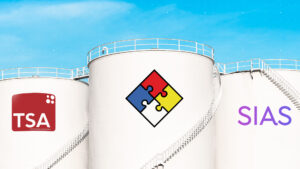

Latest Article

November 10th, 2025
Press Release: SIAS Level 2 Diploma in Bulk Storage Operations
Other posts by this author
July 17th, 2020
Safety trainer and assessor job – careers at Reynolds Training Services Ltd
July 1st, 2019
Reynolds Training Services Announces £150k Investment in Humber Region
December 20th, 2018
100% Pass Rate – NEBOSH HSE Certificate in Process Safety Management
Categories
Competency Health and Safety Articles Health and Safety News Health and Safety Training In-House News Industry News Online Health and safety Process Training Reynolds Training Services rts Training Course Trending Uncategorized
Written by Matthew Pattinson
March 20th, 2013
Health and Safety Articles
Like a fine wine, Competency gets better with age. Bubbles of personal improvement float to the surface through a mix of training, on-the-job learning, instruction, assessment and qualification.
Good Competency doesn’t happen overnight, it matures over time. So it is to be welcomed that training providers, employers and employees are being most competent in talking ‘Competency’.
Are we to open a bottle to celebrate? Yes, we should. Open two in fact. After all, this wasn’t always the case. In the early days, Competency was a mere ideal thrashed out by safety experts over tea and biscuits.
Step into my health and safety timemachine and travel to 2013 where Competency is the standard all High Hazard sites are compelled to achieve. Okay, maybe I’m being a little dramatic. 2013 is, after all, already upon us and time travel is still to be invented.
Yet the point remains: this tectonic shift in the Competency culture is of huge importance to employers, employees and safety training providers alike.
So given that Competency is just so damn important, let’s distill it into its composite elements and mull over what we can all do to improve levels across the board.
The PSLG report into Safety and Environmental Standards for Fuel Storage Sites labels Competency as: ‘A combination of practical and thinking skills, experience and knowledge. It means the ability to undertake responsibilities and to perform activities to a recognised standard on a regular basis.’
That’s the technical definition. In the words of an archetypal movie president who orders his chief scientist to reiterate their protestations “in English”, let me clarify.
Competency simply means keeping your workplace safe today, tomorrow and happily thereafter.
In short, yes it does. This is particularly the case given that the Health and Safety Executive has grabbed the issue by the scruff of the neck. As the HSE embarks on its review of Competency Management Systems with a focus on High Hazard sites we too, as an industry, must analyse our ability to demonstrate and continually develop Competency.
Put it this way, good Competency systems:
And let us not just get caught up in the red tape of the law. Good Competency keeps staff happy thereby improving culture and attitude within working environments. Organisations can also stand atop the proverbial soapbox and declare to their clients: “Our staff are Competent and we can therefore better protect your product.”
It’s a beautiful thing; a sort of self-fulfilling prophecy – everyone’s a winner baby and that’s the truth.
Good workplace Competency consists of a careful blend of unique elements. Just like the perfectly balanced petrochemical compound, getting the mix right is crucial – one wrong ingredient and things can quickly turn volatile.
Competency comprises three core elements: Knowledge, Skill and Experience. In this age of greater autonomy, we also need to take two key behavioural aspects into consideration: Understanding and Attitude.
 |
Skill = practical and mental aptitude to carry out the task at hand, to a recognised standard, on a steadfast basis. |
 |
Experience = develops over time. It is important in this development phase that personnel know what good Competency is and embed this into their routine. This should be supported by robust assessment practices, ensuring the ability to perform prior to going ‘solo’ and refreshed throughout their career. |
 |
Knowledge= the ability to undertake specific tasks, in the right order, with the correct resources. Knowledge can be derived through classroom-based and onsite training as well as continuous development within the workplace. |
 |
Understanding = a deeper aspect of Knowledge. It represents individual awareness of the consequences of the actions you take, be those good or bad. |
 |
Attitude= is influenced by a variety of factors including personal aspects of our lives that may affect concentration. |

Your Competence Management System needs to ensure that staff have received appropriate training and can demonstrate continuous development. Any effective CMS should align to six key principles:
A good CMS doesn’t just provide assurance to regulatory authorities, it delivers tangible benefits to the business by reducing risks to people, environment and plant as well as profit.
There are a range of available vocational and academic qualifications, including:
Awarding Body |
Qualification type |
Usage |
PAAVQ-Set & City and Guilds |
|
This qualification ensures the Competence of those carrying out roles in the workplace, using observation and questioning as the principle assessment methods. |
PAAVQ-Set and City & Guilds |
Downstream Standards:
|
These qualifications form the backbone of Competence standards within the downstream sector, underpinning knowledge and performance requirements, they can be taken as full qualifications or broken down into separate units. |
NEBOSH |
|
These qualifications underpin health and safety, whilst ensuring the value of good process safety is embedded into the organisation. |
NSAPI |
|
Three sets of standards underpinning process safety across all levels from operators through to senior managers.
NSAPI also provides endorsement of bespoke course development. |
Cogent |
Downstream Gold Standards:
|
This is a national framework for continuous professional development, setting out the skills required to deliver Gold Standard performance in key job roles within the downstream sector. Enhancing core skills across four areas: Technical Competence, Functional and Behavioural, Business Improvement and Compliance. |
Keeping your wine at a constant temperature is of great importance if you want it to age properly. You must care for the wine, remove from the rack every so often, dust it off and replace. Eventually, when it’s ready, excavate from the depths of the cellar, decant the bottle and drink.
The same applies to good workplace Competency. It takes time to get it right. It is a constant process of improvement.
Competency is not just about a one off review, observation or audit. It lays the foundations on which safer performance is built and embedded in an organisation, its culture, workers and business.
That’s why we have to get it right. Cheers folks.
Written by Matthew Pattinson
March 20th, 2013
Health and Safety Articles

Let’s get
learning together!
Lines open Monday to Friday, 9am to 5pm, GMT

Prefer to talk by email?

Send a message to
enquiries@reynoldstraining.com
or fill in the form and a member of our safety team is standing by to help.
- John Reynolds